
The Johns Hopkins Hospital (JHH) is the teaching hospital and biomedical research facility of Johns Hopkins School of Medicine in Baltimore, Maryland. Founded in 1889, Johns Hopkins Hospital and its school of medicine are considered to be the founding institutions of modern American medicine and the birthplace of numerous famed medical traditions, including rounds, residents, and house staff. Several medical specialties were founded at the hospital, including neurosurgery by Harvey Williams Cushing and Walter Dandy, cardiac surgery by Alfred Blalock and Vivien Thomas, and child psychiatry by Leo Kanner. Johns Hopkins Children's Center which serves infants, children, teens, and young adults aged 0–21, is attached to the hospital.

Harvey Williams Cushing was an American neurosurgeon, pathologist, writer, and draftsman. A pioneer of brain surgery, he was the first exclusive neurosurgeon and the first person to describe Cushing's disease. He wrote a biography of physician William Osler in three volumes.

The Tulane University School of Medicine is the medical school of Tulane University, a private research university in New Orleans, Louisiana. The school is located in the Medical District of the New Orleans Central Business District.
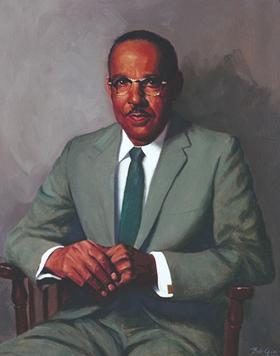
Dr. Vivien Theodore Thomas was an American laboratory supervisor who in the 1940s developed a procedure used to treat blue baby syndrome. He was the assistant to surgeon Alfred Blalock in Blalock's experimental animal laboratory at Vanderbilt University in Nashville, Tennessee, and later at Johns Hopkins University in Baltimore, Maryland. Thomas was unique in that he did not have any professional education or experience in a research laboratory; however, he served as supervisor of the surgical laboratories at Johns Hopkins for 35 years. In 1976, Johns Hopkins awarded him an honorary doctorate and named him an Instructor of Surgery for the Johns Hopkins School of Medicine. Without any education past high school, Thomas rose above poverty and racism to become a cardiac surgery pioneer and a teacher of operative techniques to many of the country's most prominent surgeons.

Alfred Blalock was an American surgeon most noted for his work on the medical condition of shock as well as tetralogy of Fallot – commonly known as blue baby syndrome. He created, with assistance from his research and laboratory assistant Vivien Thomas and pediatric cardiologist Helen Taussig, the Blalock–Thomas–Taussig shunt, a surgical procedure to relieve the cyanosis from tetralogy of Fallot. This operation ushered in the modern era of cardiac surgery. He worked at both Vanderbilt University and Johns Hopkins University, where he studied medicine and later served as chief of surgery. He is known as a medical pioneer who won various awards, including Albert Lasker Clinical Medical Research Award. Blalock was also nominated several times for the Nobel Prize in Medicine.
The Yale School of Medicine is the medical school at Yale University, a private research university in New Haven, Connecticut. It was founded in 1810 as the Medical Institution of Yale College and formally opened in 1813.
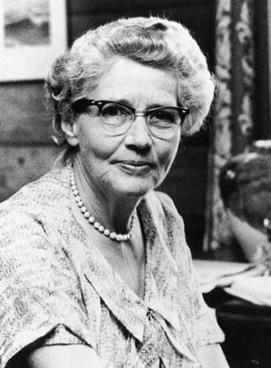
Helen Brooke Taussig was an American cardiologist, working in Baltimore and Boston, who founded the field of pediatric cardiology. She is credited with developing the concept for a procedure that would extend the lives of children born with Tetralogy of Fallot. This concept was applied in practice as a procedure known as the Blalock-Thomas-Taussig shunt. The procedure was developed by Alfred Blalock and Vivien Thomas, who were Taussig's colleagues at the Johns Hopkins Hospital.
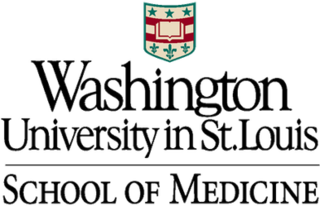
Washington University School of Medicine (WUSM) is the medical school of Washington University in St. Louis, and located in the Central West End neighborhood of St. Louis, Missouri. Founded in 1891, the School of Medicine shares a campus with Barnes-Jewish Hospital, St. Louis Children's Hospital, and the Alvin J. Siteman Cancer Center. It has consistently ranked among the top medical schools in the United States in terms of the number and amount of research grants/funding awarded by the National Institutes of Health, in addition to other measures.
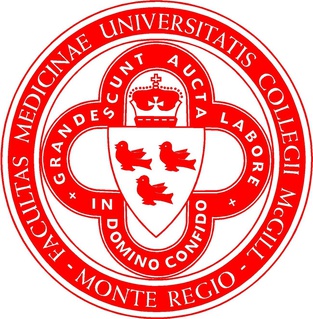
The Faculty of Medicine and Health Sciences is one of the constituent faculties of McGill University. It was established in 1829 after the Montreal Medical Institution was incorporated into McGill College as the college's first faculty; it was the first medical faculty to be established in Canada. The Faculty awarded McGill's first degree, and Canada's first medical degree to William Leslie Logie in 1833.
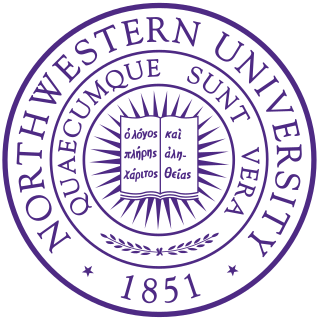
The Feinberg School of Medicine is the medical school of Northwestern University and is located in the Streeterville neighborhood of Chicago, Illinois. Founded in 1859, Feinberg offers a full-time Doctor of Medicine degree program, multiple dual degree programs, graduate medical education, and continuing medical education.

The University of Virginia School of Medicine is the graduate medical school of the University of Virginia. The school's facilities are on the University of Virginia grounds adjacent to Academical Village in Charlottesville, Virginia. Founded in 1819 by Thomas Jefferson, UVA SoM is the tenth oldest medical school in the United States. The School of Medicine confers Doctor of Medicine (M.D.) and Doctor of Philosophy (PhD) degrees, and is closely associated with both the University of Virginia Health System and Inova Health System.

The Lewis Katz School of Medicine at Temple University (LKSOM), located on the Health Science Campus of Temple University in Philadelphia, Pennsylvania. It is one of seven schools of medicine in Pennsylvania that confers the Doctor of Medicine degree. It also confers Ph.D and M.S. degrees in biomedical science, and offers a Narrative Medicine program.
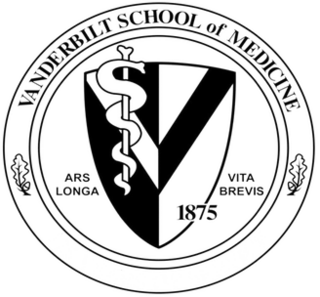
Vanderbilt University School of Medicine (VUSM) is the graduate medical school of Vanderbilt University, a private research university located in Nashville, Tennessee. The School of Medicine is primarily housed within the Eskind Biomedical Library which sits at the intersection of the Vanderbilt University and Vanderbilt University Medical Center (VUMC) campuses and claims several Nobel laureates in the field of medicine. Through the Vanderbilt Health Affiliated Network, VUSM is affiliated with over 60 hospitals and 5,000 clinicians across Tennessee and five neighboring states which manage more than 2 million patient visits each year. As the home hospital of the medical school, VUMC is considered one of the largest academic medical centers in the United States and is the primary resource for specialty and primary care in hundreds of adult and pediatric specialties for patients throughout the Mid-South.

The University of Utah School of Medicine is located on the upper campus of the University of Utah in Salt Lake City, Utah. It was founded in 1905 and is currently the only MD-granting medical school in the state of Utah.
Richard Starr Ross was an American cardiologist and served as Dean of Johns Hopkins University's School of Medicine from 1975 to 1990. He examined Richard M. Nixon for the Watergate investigation.

Catherine Annie Neill was a British pediatric cardiologist who spent the majority of her career at the Johns Hopkins Children's Center in Baltimore, where she worked alongside Helen B. Taussig. Her primary interest was congenital heart defects; she discovered one type of defect, scimitar syndrome, in 1960.

Elizabeth Hurdon was a British gynecologist and pathologist, considered the first gynecological pathologist.
















